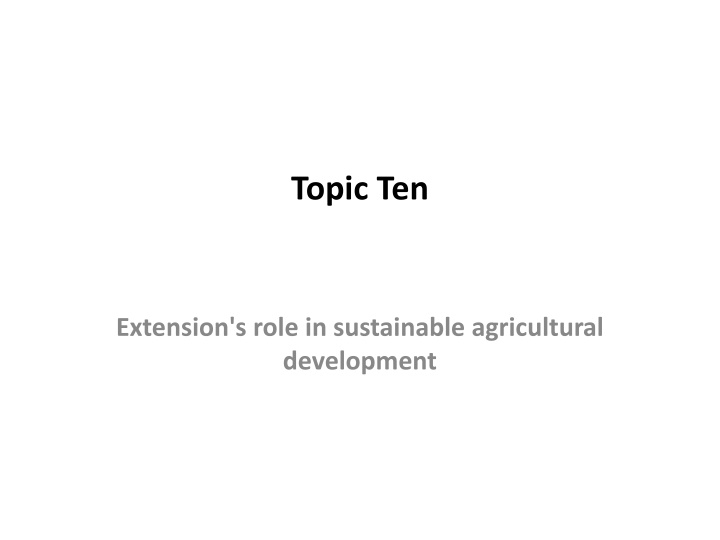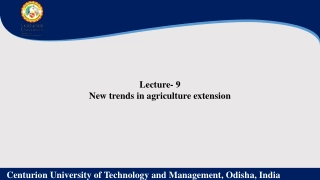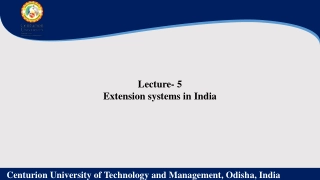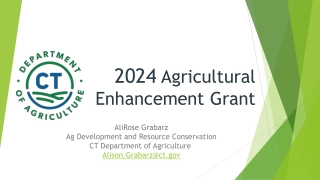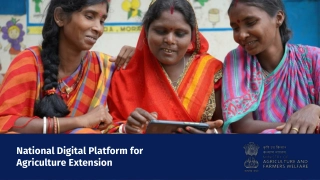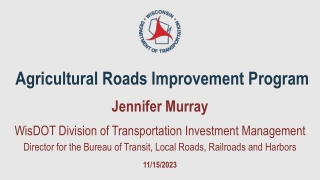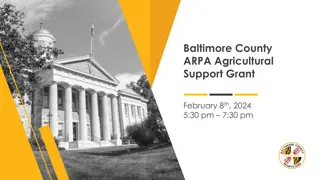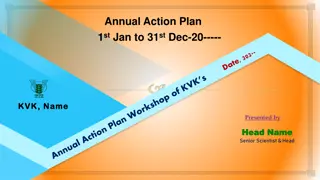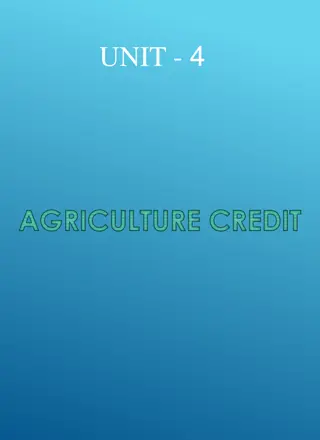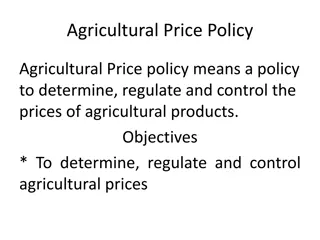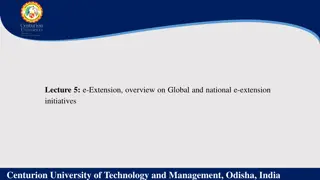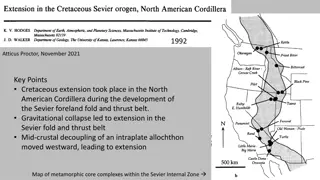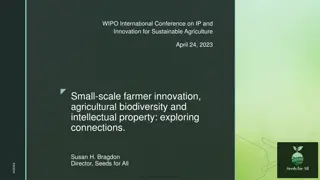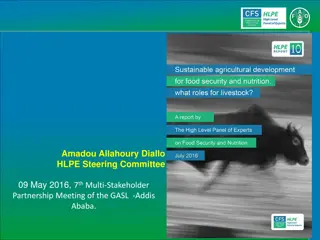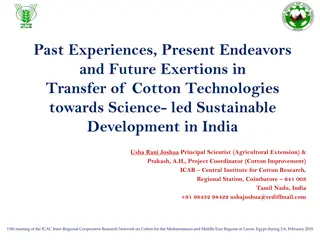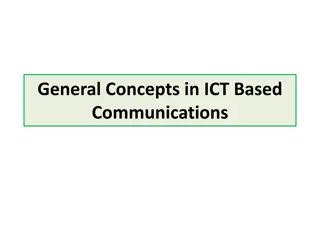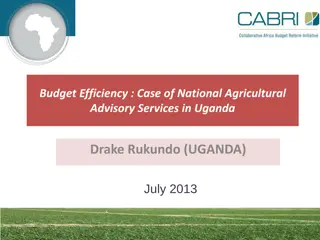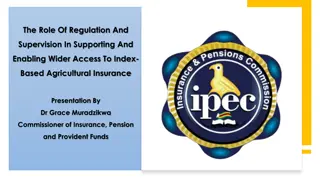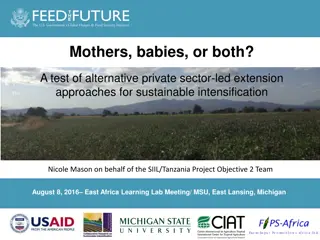Extension's Role in Sustainable Agricultural Development
Agricultural development policies have heavily relied on external inputs, but the shift towards regenerative and resource-conserving technologies is proving beneficial for farmers and nations worldwide. Successes in sustainable agriculture are evident in various regions, highlighting the importance of minimizing external inputs and maximizing internal resources. However, the lack of favorable policy frameworks remains a significant barrier to widespread adoption of sustainable agricultural practices.
Download Presentation

Please find below an Image/Link to download the presentation.
The content on the website is provided AS IS for your information and personal use only. It may not be sold, licensed, or shared on other websites without obtaining consent from the author.If you encounter any issues during the download, it is possible that the publisher has removed the file from their server.
You are allowed to download the files provided on this website for personal or commercial use, subject to the condition that they are used lawfully. All files are the property of their respective owners.
The content on the website is provided AS IS for your information and personal use only. It may not be sold, licensed, or shared on other websites without obtaining consent from the author.
E N D
Presentation Transcript
Topic Ten Extension's role in sustainable agricultural development
During the past fifty years, agricultural development policies have been remarkably successful at emphasizing external inputs as the means to increase food production. This has led to growth in global consumption of pesticides, inorganic fertilizer, animal feed-stuffs, and tractors and other machinery. These external inputs have, however, substituted for natural processes and resources, rendering them less powerful. Pesticides have replaced biological, cultural, and mechanical methods for controlling pests, weeds, and diseases; inorganic fertilizers have substituted for livestock manures, composts, and nitrogen-fixing crops; information for management decisions comes from input suppliers, researchers, and extensionists rather than from local sources; and fossil fuels have substituted for locally generated energy sources. . 2
The basic challenge for sustainable agriculture is to make better use of these internal resources. This can be done by minimizing the external inputs used, by regenerating internal resources more effectively, or by combinations of both
Evidence is now emerging that regenerative and resource-conserving technologies and practices can bring both environmental and economic benefits for farmers, communities, and nations. The best evidence comes from countries of Africa, Asia, and Latin America, where the concern is to increase food production in the areas where fanning has been largely untouched by the modem packages of externally supplied technologies. In these complex and remote lands, some farmers and communities adopting regenerative technologies have substantially improved agricultural yields, often using only few or no external inputs. 4
But these are not the only sites for successful sustainable agriculture. In the high-input and generally irrigated lands, farmers adopting regenerative technologies have maintained yields whilst substantially reducing their use of inputs. And in the very high-input lands of the industrialized countries, farmers have been able to maintain profitability even though input use has been cut dramatically, such as in Europe.
All of these successes have three elements in common. They have made use of resource-conserving technologies such as integrated pest management, soil and water conservation, nutrient recycling, multiple cropping, water harvesting, and waste recycling. Most successes, though, are still localized. They are simply islands of success. This is because an overarching element, a favourable policy environment, is missing. Most policies still actively encourage fanning that is dependent on external inputs and technologies. It is these policy frameworks that are one of the principal barriers to a more sustainable agriculture. 6
Sustainability and levels of action A necessary condition for sustainable agriculture is that large numbers of farming households must be motivated to use coordinated resource management. The problem is that, in most places, platforms for collective decision making have not been established to manage such resources The success of sustainable agriculture therefore depends not just on the motivations, skills, and knowledge of individual farmers, but on action taken by groups or communities as a whole. This makes the task more challenging. Simple extension of the message that sustainable agriculture can match conventional agriculture for profits, as well as produce extra benefits for society as a whole, will not suffice. 7
Rather, Sustainability is a quality that emerges when people individually or collectively apply their intelligence to maintain the long-term productivity of the natural resources on which they depend (Sriskandarajah, Bawden, & Packham, 1989). In other words, Sustainability emerges out of shared human experiences, objectives, knowledge, decisions, technology, and organization. 8
Agriculture becomes sustainable only when people have reason to make it so. They can learn and negotiate their way towards Sustainability. In any discussions of Sustainability, it is important to clarify what is being sustained, for how long, for whose benefit and at whose cost, over what area, and measured by what criteria. Answering these questions is difficult, because it means assessing and trading off values and beliefs. 9
It is therefore crucial to focus on more than one system level. At the farm level, there is the farm household. At the above-farm level, there are the collective stakeholders, who might or might not be organized for sustainable use of the whole resource unit. In an irrigation scheme, it is common for an irrigators' association collectively to manage water use at the scheme level But when it comes to watersheds or other vulnerable resource units, it is usually impossible to identify an appropriate "platform" for decision making.
Resource-conserving technology development and transfer Although many resource-conserving technologies and practices have been widely proven on research stations to be both productive and sustainable, the total number of farmers using them is still small. This is because these technologies involve the substitution of management skills, knowledge, and labour for external inputs. The modern approach to agricultural research and extension, however, has been to emphasize comprehensive packages of technologies. Few farmers are able to adopt the whole modem packages of production or conservation technologies without considerable adjustments. 11
Alley cropping, an agro-forestry system comprising rows of nitrogen-fixing trees or bushes separated by rows of cereals, has long been the focus of research. Many productive and sustainable systems, needing few or no external inputs, have been developed. They stop erosion, produce food and wood, and can be cropped over long periods. But the problem is that very few, if any, farmers have adopted these alley cropping systems as designed. Despite millions of dollars of research expenditure over many years, systems that have been produced are suitable only for research stations. Where these systems have had some success, however, farmers have taken one or two components of alley cropping and adapted them to their own farms 12
Incorporating farmer experimentation The problem with agricultural science and extension is that it has poorly understood the nature of "indigenous" and rural people's knowledge. For many, what rural people know is assumed to be "primitive," "unscientific," or overtaken by development, and so formal research and extension must "transform" what they know so as to "develop" them. An alternative view is that local knowledge is a valuable and underused resource, which can be studied, collected, and incorporated into development activities. Neither of these views, though, is entirely satisfactory because of the static view of knowledge implied . It is more important to recognize that local people are always involved in active learning, in (re)inventing technologies, in adapting their farming systems and livelihood strategies. Understanding and supporting these processes of agricultural innovation and experimentation have become an important focus in facilitating more sustainable agriculture with its strong locality-specific nature. 13
The problem with modem agricultural science is that technologies are finalized before farmers get to see them. If new technologies are appropriate and fit a particular farmer's conditions or needs, then they stand a good chance of being adopted. But if they do not fit and if farmers are unable to make changes, then they have only the one choice. They have to adapt to the technology, or reject it entirely. The alternative is to seek and encourage the involvement of farmers in adapting technologies to their conditions. This constitutes a radical reversal of the normal modes of research and technology generation, because it requires interactive participation between professionals and farmers. 14
Participatory technology development (PTD) is the process in which the knowledge and research capacities of farmers are joined with those of scientific institutions, whilst at the same time strengthening local capacities to experiment and innovate. Farmers are encouraged to generate and evaluate indigenous technologies and to choose and adapt external ones on the basis of their own knowledge and value systems. But, of course, researchers and farmers participate in different ways, depending on the degree of control each actor has over the research process The most common form of "participatory" research is researcher designed and implemented, even though it might be conducted on farmers' fields. Many on-farm trials and demonstration plots represent nothing better than passive participation. .Less commonly, farmers may implement trials designed by researchers. But greater roles for farmers are even rarer. 15
Even though farmers "participated" in implementing trials, there was widespread uncertainty about what researchers were actually trying to achieve. Farmers misunderstood experiments and rejected the new technologies." Although technology development must involve farmers, it does not mean that scientific research has no place. Research will have to contribute on many fronts, such as in the development of resistant cultivars, knowledge about the life cycles of pests, biological control methods, suitable crops for erosion control, and processes in nitrogen fixation. Such research also gives insight into complex processes such as the movement of nutrients in the soil and their accessibility for plants. But all these contributions must be seen as providing choices for farmers as they make farm-specific decisions and move the whole farm towards greater sustainability. 16
Learning process and develop a new professionalism The central principle of sustainable ways enable agriculture is that it must enshrine new of learning about the world. But learning should not be confused with teaching. 17
